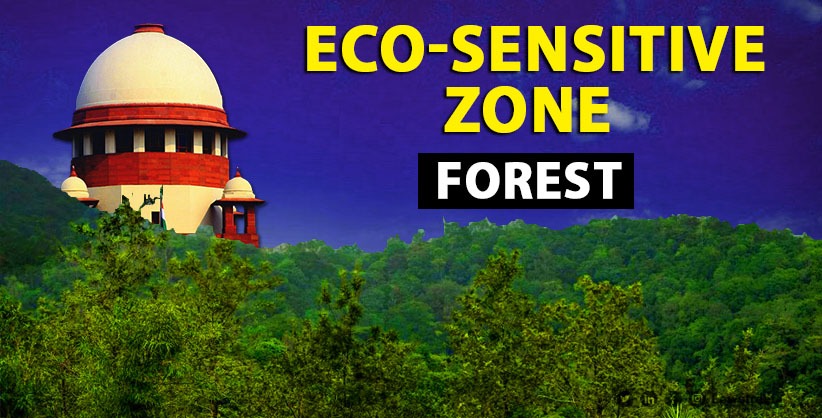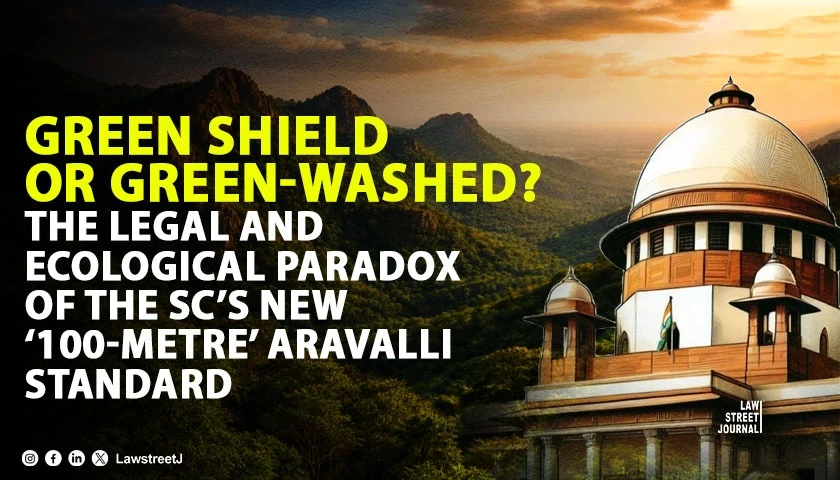NEW DELHI: The Supreme Court on Wednesday modified its June 3, 2022 order mandating a one-kilometre eco-sensitive zone (ESZ) around protected areas as there are inbuilt safeguards in existing law to prevent rampant construction or any abuse of process that may be detrimental to wildlife habitat.
"We are of the view that if such a direction is continued, rather than avoiding man-animal conflict, it will intensify the same. The requirement of declaring ESZs (buffer zone) is not to hamper day to day activities of the citizens but is meant to protect the precious forests/protected areas from any negative impact, and to refine the environment around the Protected Areas," a bench led by Justice B R Gavai said.
Acting on a review plea by the Centre and others, a bench also comprising Justices Vikram Nath and Sanjay Karol said that hundreds of villages are situated within the ESZs in the country.
"If no permanent construction is to be permitted for any purpose, a villager who is desirous to reconstruct his house would not be permitted. Similarly, if there is an extension in their family and some additional construction is required for accommodating the enlarged family, the same would also not be permitted," the court noted.
"Similarly, if the government decides to construct schools, dispensaries, anganwadis, village stores, water tanks and other basic structures for improvement of the life of the villagers, the same would also not be permitted," the court added.
Going through the effect of June 2022 order, the bench also pointed out there are also certain projects of national and strategic importance such as construction of National Highways, Railways, Defence related infrastructure etc.
"The effect of the direction is that all such activities will be permanently prohibited," it said.
It further pointed out if the order is not modified,it will also be impossible for the Forest Departments to conduct eco-development activities around National Parks and Sanctuaries.
The said activities are required with the dual objectives of protection of wildlife and provision of benefits for the local communities, including the construction of community halls, bridges, threshing floors, fish-drying platforms, drinking water storage, etc, for the benefit of local communities/villages; and forest chowkies, watch towers, and other structures for protection of wildlife and forests; and the construction of interpretation centres, toilets and other basic structures.
The court was informed in the ESZ around Nagarjunasagar Srisailam Tiger Reserve in Andhra Pradesh, 100 villages are situated within it. In the ESZ around Valmiki Wildlife Sanctuary, Valmiki National Park and Valmiki Tiger Reserve in Bihar, 323 villages are situated within it. In the ESZ around Betla National Park, Palamau Wildlife Sanctuary, and Mahuadanr Wolf Sanctuary in Jharkhand, 382 villages are situated within it. In the ESZ around Cauvery Wildlife Sanctuary in Karnataka, 107 villages are situated within it. In the ESZ around Kanha National Park and Phen Wildlife Sanctuary in Madhya Pradesh, 168 villages are situated within it. In the ESZ around Tadoba-Andhari Tiger Reserve in Maharashtra, 150 villages are situated within it. In the ESZ around Jaisamand Wildlife Sanctuary in Rajasthan, 83 villages are situated in it. Even in a small ESZ around Keoladeo National Park in Rajasthan, 22 villages situated in it.
The Union Government led by Additional Solicitor General Aishwarya Bhati submitted that it has already issued Guidelines on February 9, 2011 for declaration of ESZs around National Parks and Wildlife Sanctuaries.
The said Guidelines, framed after consulting the National Board for Wildlife and all the State and Union Territory Governments, provided a detailed procedure for submitting a proposal for declaration of the areas around National Parks and Wildlife Sanctuaries as ESZs.
It is further submitted that the said Guidelines itself contained various activities which have been categorized as prohibited, regulated and permitted.
The Centre further said the direction of June 3, 2022 is likely to cause great hardship to the citizens residing in the ESZs.









